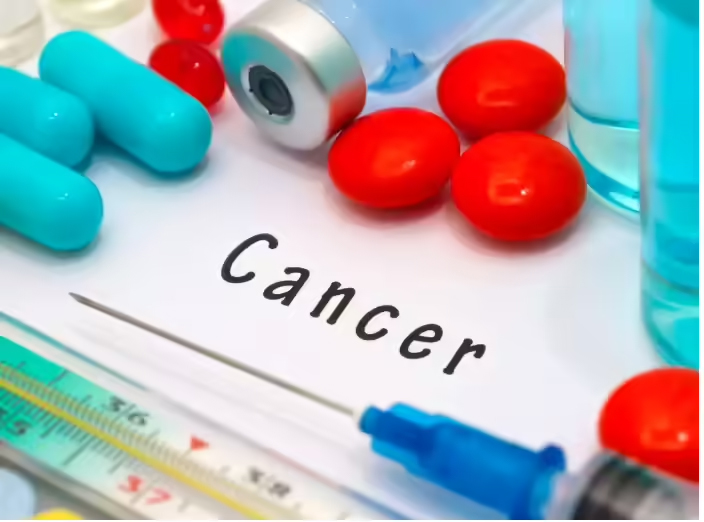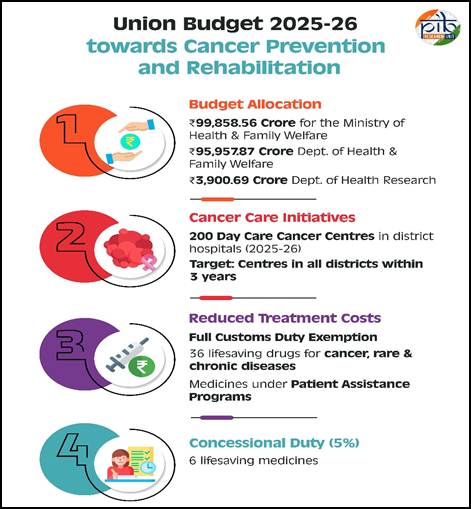Introduction:
India is witnessing a rapid rise in cancer cases, driven by lifestyle changes, ageing populations, and environmental factors. According to projections by the National Cancer Registry Programme (NCRP) under the Indian Council of Medical Research (ICMR), cancer cases in the country are expected to grow from 1.39 million in 2020 to 1.57 million by 2025. However, this increasing burden is not matched by sufficient infrastructure, especially in terms of treatment capacity and population-level surveillance. There are clear gaps in early detection, radiotherapy access, and data systems to monitor and respond to trends.
· Cancer continues to be a life-threatening and often prolonged illness that demands timely diagnosis and a wide range of treatments. Among these, radiotherapy plays a vital role in both curative and palliative care. At the same time, a robust surveillance system is essential for monitoring the burden, formulating policies, allocating resources, and evaluating progress. Despite four decades of cancer registry efforts, India still struggles with low population coverage and unequal access, particularly in rural and underserved areas. The situation calls for urgent attention and systemic reforms to strengthen cancer care and monitoring mechanisms.
Low Radiotherapy Use in India:
A recent ICMR study published in BMC Cancer reveals that 58.4% of all cancer patients in India require radiotherapy at some point during treatment. However, only 28.5% actually receive it. This means nearly half of the patients who need radiotherapy are going without it.
This gap varies across different cancer types. Utilisation is lowest for cancers like lymphoma, lung, and prostate:
- Lymphoma: 79.1% gap
- Lung cancer: 69.9% gap
- Prostate cancer: 58.5% gap
Even for more commonly treated cancers, access remains poor:
- Head and neck cancers: 44.9% gap
- Cervical cancer: 39.9% gap
- Brain cancer: 32% gap
Late-stage diagnosis is a key reason behind this high demand. Radiotherapy is often used to shrink tumours before surgery, control tumour growth, or provide pain relief in advanced stages. In countries like India, where diagnosis is frequently delayed, dependence on radiotherapy increases further.
Why Radiotherapy Access Is So Limited:
- The main reason for underutilisation is the shortage of radiotherapy machines. The World Health Organization recommends at least 1 machine per million people, and ideally up to 4 per million. With a population of 1.45 billion, India should have at least 1,450 machines, but currently has only 794 megavoltage machines—barely covering half the minimum requirement.
- Although there has been an 18% increase in machines—from 670 to 794—it’s still not enough. The ICMR study suggests that India actually needs between 1,585 and 2,545 machines to meet current demand. The Linear Accelerator Shortage Index (LSI) remains high at 256, indicating a critical shortfall.
- According to the study, 126–222 machines could be avoided if cancers were diagnosed earlier. In fact, four cancers—breast, cervical, head and neck, and lung—account for 60% of all radiotherapy needs. Early detection could reduce the load significantly. However, with their prevalence projected to increase, the demand for radiotherapy may rise by 70–100% in countries like India.
Scaling up is not just about equipment. To meet optimal care standards, India would also need:
- 4,034 radiation oncologists
- 2,241 medical physicists
- 6,732 radiation therapists
The estimated investment required for this infrastructure ranges from USD 64.2 million to USD 81.7 million.
Cancer Registries in India:
- India’s cancer surveillance system is underpowered. The National Cancer Registry Programme (NCRP), started in 1981, began with three Population-Based Cancer Registries (PBCRs) and three Hospital-Based Cancer Registries (HBCRs). Today, India has 48 PBCRs and 324 HBCRs, but the coverage remains limited.
- PBCRs are the gold standard—they track cancer incidence, mortality, and trends across defined populations. However, they currently cover only 18% of the total population and just 1% of the rural population. In contrast, HBCRs collect hospital-specific data, which is useful for improving hospital services but doesn’t give an accurate picture of the national or regional cancer burden.
- This urban-centric focus leaves large portions of rural, tribal, and remote populations unmonitored. Such weak surveillance limits the ability of programmes like the National Programme for Prevention and Control of Cancer, Diabetes, Cardiovascular Disease and Stroke (NPCDCS) to function effectively.
How Registry Data Has Influenced Policy:
Despite limited coverage, PBCR data has supported several important policy measures:
- It was used by the cervical cancer task force in 2024 to recommend a nationwide HPV vaccine rollout.
- It helped strengthen tobacco control efforts under the Cigarette and Other Tobacco Products Act (COTPA), 2003.
- Insights from registries contributed to:
- Pictorial warnings on tobacco products
- Anti-tobacco messages in films and television
- E-cigarette bans and gutka restrictions
- A national quitline and tobacco cessation campaigns
Yet, without wider coverage, these efforts are limited in scale and reach.
Cancer Is Not a Notifiable Disease in India:
A major barrier to improving cancer data is the fact that cancer is not a notifiable disease at the national level. This means healthcare providers are not legally required to report cancer cases. While 15 Indian states have made cancer notifiable on their own, large and populous states such as Maharashtra, Uttar Pradesh, and Bihar have not.
In a 2024 response to the National Human Rights Commission, the Ministry of Health argued that cancer is non-communicable and does not spread from person to person, so it should not be declared notifiable. But this position limits efforts to improve surveillance.
Where notification is mandatory, several implementation challenges persist:
- Inadequate digital infrastructure
- Weak identity protection and privacy mechanisms
- Lack of standardised training for data personnel
- Reluctance among private hospitals to share data
How India Compares Globally in Cancer Surveillance:
India ranks third in global cancer incidence (after China and the US) and second in cancer mortality, with over 900,000 deaths in 2022. Yet, registry coverage is significantly below global averages.
As per the IARC’s CI5 Volume XI (2021):
- North America: 98% population coverage
- Oceania: 77%
- Europe: 46%
- Asia (including India): 7%
- Africa: 1%
- Global average: 15%
Some global benchmarks:
- US: National Programme of Cancer Registries (NPCR) covers 96%, SEER covers 45.9%
- China: ~40% coverage and steadily improving
- UK, Australia, South Korea: Near-total coverage
- Thailand and Brazil: Expanded coverage despite resource constraints
India, despite being a regional hub for cancer registry training (Mumbai is the GICR hub for South, East and South-East Asia), has made limited domestic progress in expanding PBCRs.
The Way Forward:
India must move swiftly to scale up its cancer care and monitoring infrastructure. Several strategies can be adopted:
· Leveraging Digital Ecosystems: link cancer registries to the Ayushman Bharat Health Account (ABHA) under the Ayushman Bharat Digital Mission (ABDM) to enable real-time, seamless data integration and reduce duplication. Using Artificial Intelligence (AI) tools like Natural Language Processing (NLP) can automate data extraction from clinical records and improve registry efficiency
· Public-Private Partnerships: leverage the National Cancer Grid (NCG), a network of nearly 360 cancer centres and research institutions, to enhance cancer surveillance. NCG already treats over 60 percent of India’s new cancer cases and is well positioned to support the NCRP through its digital platforms and training expertise.
· policy-level challenge of non-notification: A legal mandate for cancer notification, combined with secure data systems and standardised formats, can encourage both public and private sector participation. Increased funding, training, and technological support will be essential in building next-generation cancer registries.
Conclusion:
India stands at a crucial point in its cancer control journey. The gaps in radiotherapy access and cancer surveillance are too wide to ignore. If the country is to meet the rising burden of cancer, it must invest in expanding radiotherapy infrastructure, ensure universal and early diagnosis, and build a complete and efficient data system. As cancer trends evolve due to lifestyle and environmental factors, relying on fragmented and outdated data can have serious long-term consequences. A stronger, integrated, and digitally enabled cancer surveillance system is not just desirable—it is essential for saving lives.
| Main question: The rising burden of non-communicable diseases like cancer requires a shift in India’s health priorities. Analyse this statement in light of gaps in cancer treatment and surveillance infrastructure in India. |








